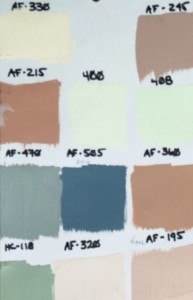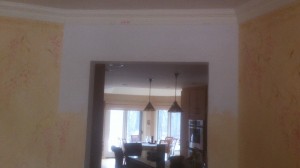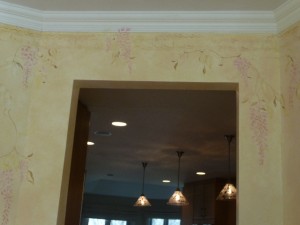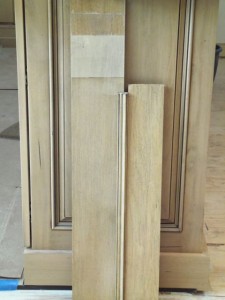Color design consultating is a sure way to reduce the stress (and the mistakes) of making paint color selections for a whole house at once. People who crave color are often intimidated and overwhelmed by having to choose paint colors and how to have them work harmoniously together.
As house painting contractors, we are often called o to offer color and concept consultation to clients in the Chicago area. We recently worked on a house where the walls were “builder-white” throughout. Having lived there for a few months, our clients were very much color-deprived. However, they were at a loss on how to go about it and put it all together. They took advantage of a two and a half hour paint color consultation. The first picture gives you a glimpse at the color palette selected for their project.
In order to produce a result, which is both expressive of the clients’ personality and nurturing to them, we have to really listen to them and see how they respond to color. We sometime have to modify our recommendations, based on who will be using the room the most and the particular needs of that person. So, paint color consultation is very personal service that greatly enhances the value of a paint job.
White no more as shown in our picture! More importantly, the result is both pleasing and nurturing to the clients.









 Follow
Follow







